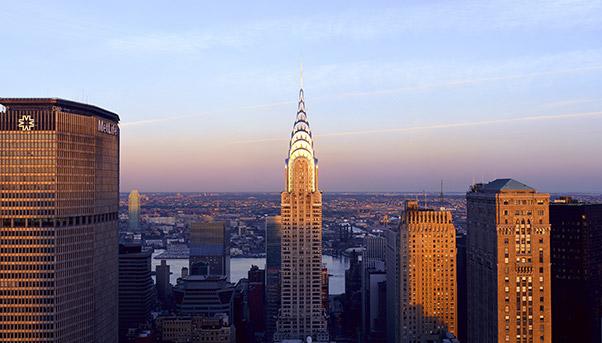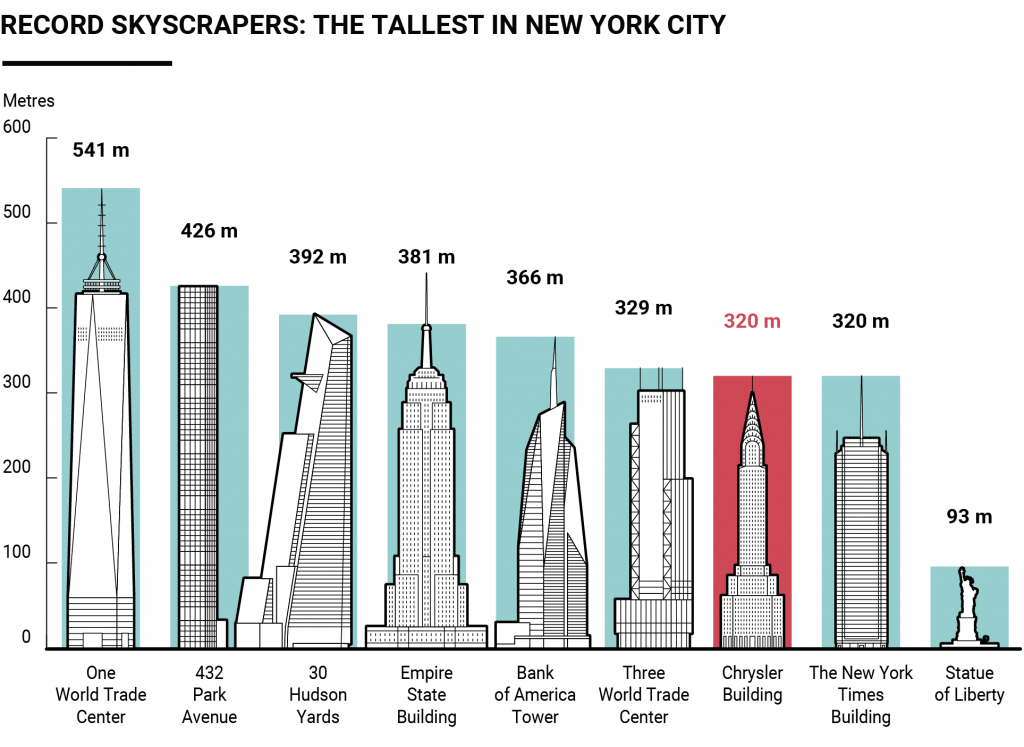
It took 90 minutes to position the steel spire: 90 minutes of tension necessary to lift the 27-tonne spire and place it 280 metres in the air, as if it were a cherry on a cake, atop the Chrysler Building. That symbol of what was already considered to be the most beautiful skyscraper in New York City had to remain hidden until the very last minute—not because its creators wanted to avoid the publicity surrounding one of the era’s grandest infrastructure projects, but to fool the builders of the Bank of Manhattan on 40 Wall Street who were in competition with Chrysler in a race to build the world’s tallest skyscraper.
When the spire was put in place on that October morning in 1929, it was the final stretch to reach 320 meters that succeeded in setting the record for the world’s tallest building, at least for awhile (the record would be broken just 11 months later by the Empire State Building).
Chrysler Building: a mogul’s dream
Most people think the Chrysler Building is the brainchild Walter P. Chrysler, the visionary founder of the famous automobile maker, who wanted to commemorate his industrial offspring by building a skyscraper with a top that looked like the radiator of a car engine. In actual fact very few people know that the design for what eventually became the Chrysler Building was initially financed by the ex-senator of New York state named William H. Reynolds, who commissioned William Van Alen, an architect born in the Williamsburg area of Brooklyn, to design the tower.
Van Alen’s plan for the skyscraper, which was slated to be called the Reynolds Building, turned out to be beyind the reach of the ex-senator’s finances. Therefore on 15 October 1928 William H. Reynolds sold the design to Walter P. Chrysler for the sum of $2 million. After his purchase, Chrysler asked Val Alen if he could change the blueprint to make it into something even more ambitious — the tallest building in the world.
And it was with this goal in mind that the construction site was opened 1928. Work continued until 1930. It took just under three years to set not only a new world record, but to erect a building that is still one of the most beautiful in Manhattan even today.

Luxury and magnificence
A large portion of the Chrysler Building was constructed within the skyscraper’s skeleton. Between the 65th and 67th floors, craftsmen set up their workshops where they created some of the building’s most important features, including the spire, the windows and the metal sheets that cover the facade.
Very few people have had the chance to see it, but the lucky few who have been say that the Cloud Club is an incredible sight. Spread out over three floors, from the 66th to the 68th, this super exclusive Club was the watering hole for New York City’s movers and shakers, who gathered here to drink, play cards and to talk business deals. It used to be possible to go up to the 71st floor, but today the building’s a top floors are closed to the public. But if you want to experience the richness if the building’s interior, you can take a peek at its lobby, decorated with a mural by Edward Turnbull called “Energy, Result, Workmanship and Transportation” which depicts not only the skyscraper but also the workers who built it.
Chrysler Building: a lost inheritance
When Walter P. Chrysler embarked on the project to build the skyscraper, his automobile company was the thrird-largest in the United States, after Ford Motor Company and General Motors. His desire to take on such an ambitious project was linked to his goal to demonstrate his comlany’s succeess by giving Chrysler a headquarters that would be the envy of the entire world. And, in fact, the skyscraper served as the company’s headquarters from 1930 to 1950. But the era came to an end. The auto mogul was so in love with the building that he bought it for himself. He wanted it to be a symbol of his dynasty and leave it for his heirs. So when Chrysler died in 1940, ownership of the building passed over to his family. But not for long. In 1953 the skyscraper was sold to the real estate investor William Zeckendorf for $18 million. And the only trace left of the car baron who wanted to set a new world record was the name.


